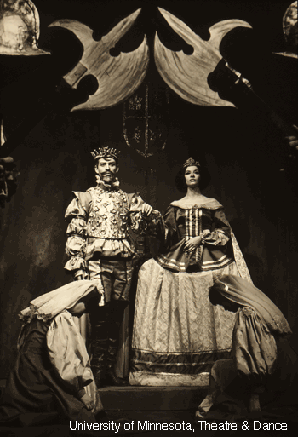The idea for my essay, and the classroom exercises it treats, came out of a moment in which I realized I was not doing the kind of historiography to which I was holding others accountable.
I’d been researching several living museum sites that used “second person” programming, where program designers invite visitors to “do” history instead of just passively experiencing it through exhibits and/or traditional living history encounters. I could see how these emerging practices were promising but also limited: At the sites I was visiting, the programs were basically scripting museum visitors’ behavior. While giving them the illusion of choice, they actually didn’t allow participants much room to depart from the story the program designers laid out.
One program I thought could do better was “Follow the North Star” an Underground Railroad reenactment at Conner Prairie in Indiana, where museum visitors step into the role of black slaves trying to escape to freedom in the north. “Follow the North Star” has all the elements of what I’m calling performative learner-driven historiography: visitors are assigned characters, given a scenario, equipped with information, and put into the field to solve a problem (escape to Cass County, Michigan, or all the way to Canada, without being caught by police or bounty hunters, by picking up the codes and finding abolitionist Quakers and other allies), but plants in the group make sure our choices always follow the pre-set path (we aren’t allowed to make the “wrong choice” and see how the consequences play out, then try again, as I would like to see in such a program).
I offered “Follow the North Star” and other programs some suggestions for improvement in a couple of articles, looking to Forum Theatre from Boal’s Teatro Oprimido for a model, but it became quickly evident to me that if I was expecting this kind of pedagogy from my research sites, I’d be hypocritical not to work it into my own theatre history and performance studies classrooms. So, I tried it out, beginning in Spring of 2008, my first year teaching graduate theatre history and performance studies at Bowling Green State University. This essay represents some of my initial findings, and an invitation to others to try it out.
I haven’t been at it for long, and the results have, of course, been mixed. I’ve also been surprised or made uncomfortable on occasion by my students’ choices. The black-face minstrelsy reenactment I walked into for one class, mentioned briefly in the essay, had me wondering whether I needed to shut the whole thing down (the students had told me they’d be presenting on vaudeville—a little white lie, as it were). But they knew what they were doing: The blacked-up students weren’t the protagonists of the reenactment. The other students and I were. We were the ones being confronted with a dilemma and forced to make a decision. At what point we intervene and stop them from performing? It took us longer than it should have to do so, and that was a learning experience.
My essay is more of a provocation than a handbook for doing this kind of work in the classroom. As the example above would indicate, I’m still working out the bugs myself. As a provocation, the second-person voice I use in the essay is an attempt to model second-person museum programming and pedagogy, and I had to bone up a bit on “textual” or “narrative-You” strategies from literary studies (see Bruce Morissette, “Narrative ‘You’ in Contemporary Literature, Comparative Literature Studies 2 (1965), 1-24, reprinted and expanded in Morissette, Novel and Film: Essays in Two Genres [Chicago, U of Chicago P, 1985] 108-40; and David Herman, “Textual ‘You’ and Double Deixis in Edna O’Brien’s A Pagan Place,” Style 28.3 [Fall 1994] 378-411).
Does it work? It kind of ends up scripting your experience though the essay (cf. Matt delConte, “Why You Can’t Speak: Second-Person Narration, Voice, and a New Model for Understanding Narrative,” Style 37.2 [Summer 2003] 204-219, which argues for a multiplicity of voice variables in narrative). Henry and I batted around the idea in early stages that I might rewrite it a “choose your own adventure” piece, where readers could have a bit more agency throughout. The four-thousand word limit we set for each essay, however, made this a bit more of a challenge than I could figure out how to solve.
But, to even be aware that you’ve got possible responses that fall outside the narrative I’ve scripted puts you squarely into what Stuart Hall calls a negotiated reading (Hall, “Encoding/decoding,” Ed. Centre for Contemporary Cultural Studies, ed., Culture, Media, Language: Working Papers in Cultural Studies, 1972-79 [London: Hutchinson, 1980] 128-38). And, if we look to Marvin Carlson’s take on reader-response theory, we can say that you the reader have a lot of agency in whether to co-produce and actualize the readings produced by the author (Marvin Carlson, “Theatre Audiences and the Reading of Performance,” Interpreting the Theatrical Past. Ed. Thomas Postlewait and Bruce A. McConachie [Iowa City: University of Iowa Press, 1989]).
So, feel free to read this essay with a healthy amount of resistance. You’re making its meaning as much as is the author.

